As Colorado grows, protecting what makes our home special is vital.
Join us in conserving the land and water that unite us.
Water scarcity in the West is the natural resource challenge of our lifetime. For more than a decade, Palmer Land Conservancy has diligently developed innovative conservation solutions to balance and optimize large-scale competing water needs. With a challenge as big and complex as water scarcity, Colorado requires both large-scale and small projects that balance the needs of growing cities, local agriculture, and healthy ecosystems.
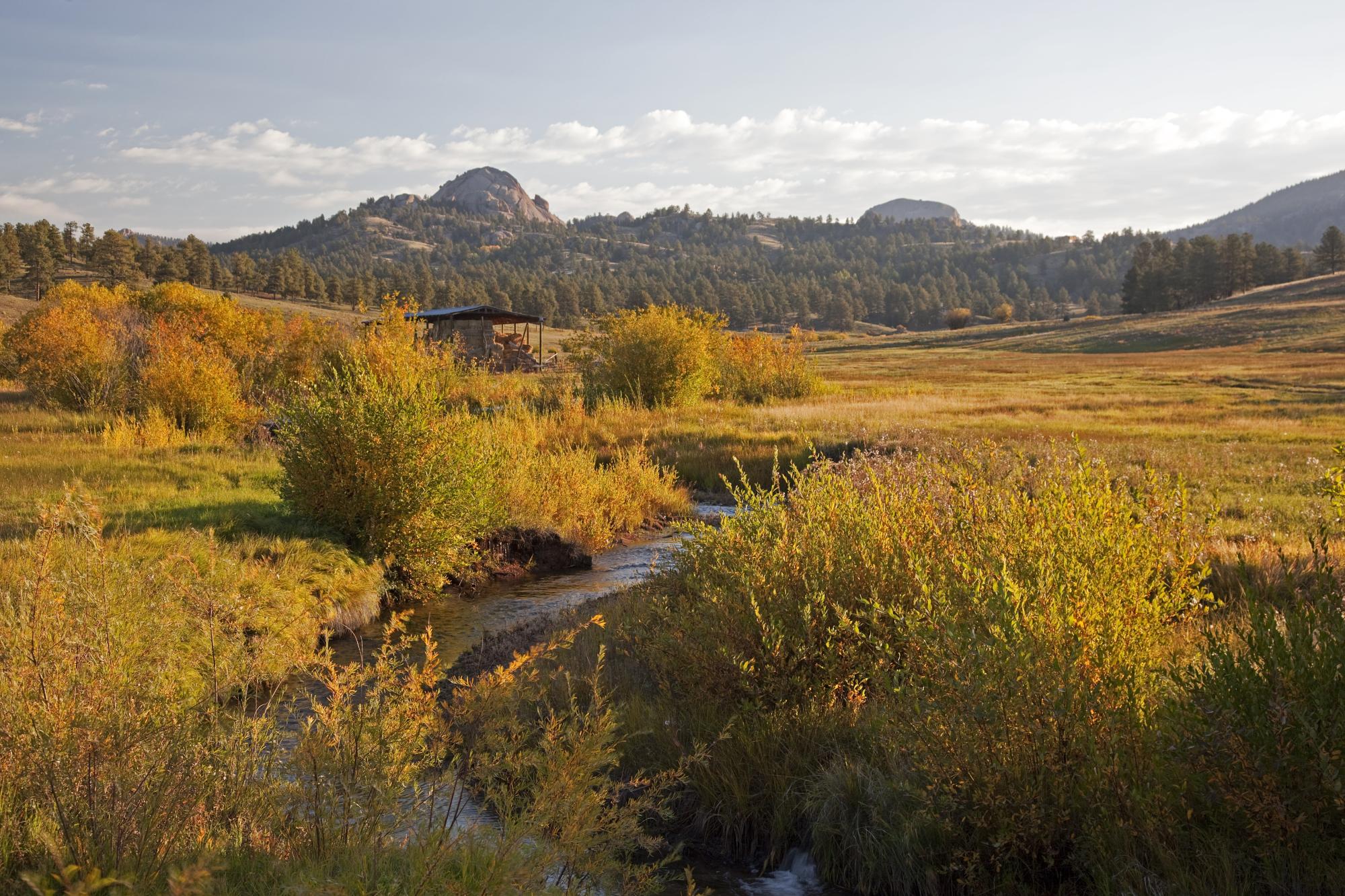
A 1.2-mile restoration project on Fourmile Creek on a Palmer-protected ranch is an excellent example of how small-scale projects can contribute to meaningful water conservation that positively impacts local ecosystems and communities downstream.
On a quintessential fall day, a group of scientists and conservation experts converged on Fourmile Creek, which has cut steep banks through a high mountain meadow flanked by dense stands of pine, fur, and spruce. The steep eroded banks of this section of Fourmile Creek indicate a symptom of a damaged waterway that provides minimal benefits to the adjacent lands.
Equipped with an assortment of hand tools, logs, posts, and willow stems, the team worked together to improve the creek's health by building a stream restoration structure called a Post-Assisted Log Structure (PALS). PALS are a low-tech stream restoration structure designed to slow the velocity of the water to mitigate erosion, improve water retention, and connect the stream to its historical floodplain. In essence, a PALS is a set of logs of various sizes that are pinned perpendicular to the creek with untreated wooden posts that are driven vertically into the creek bed to mimic naturally occurring log jams.

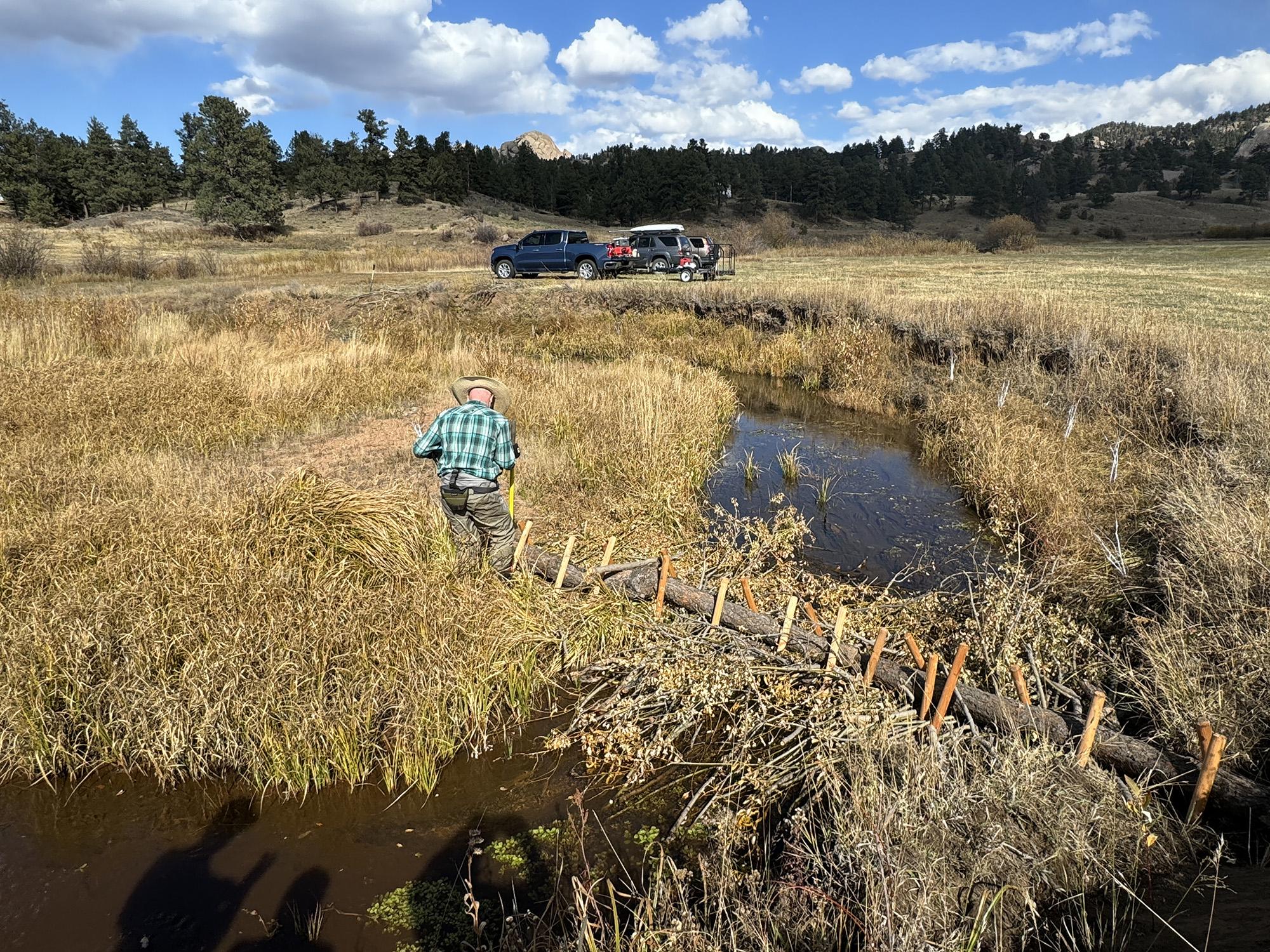
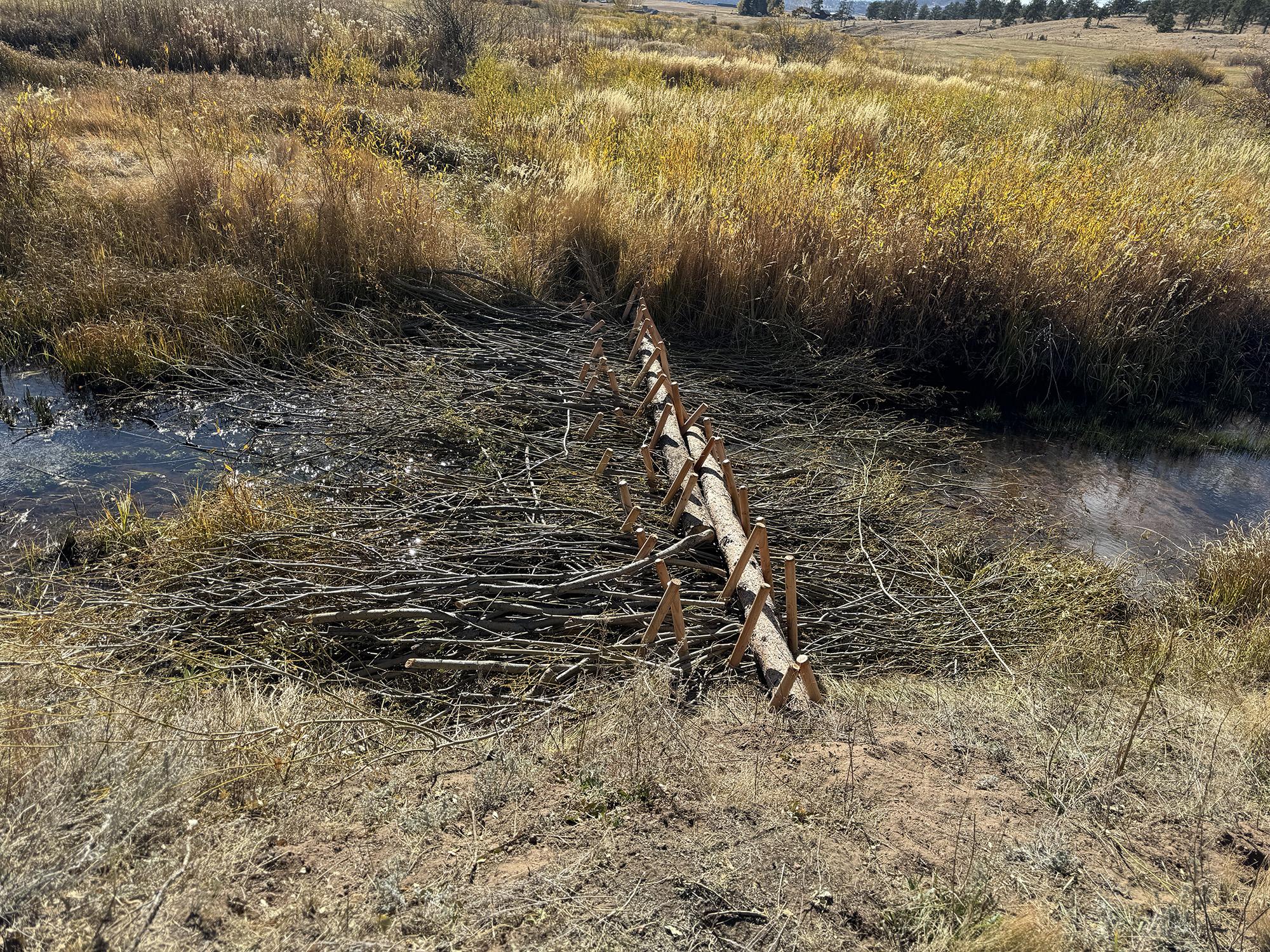
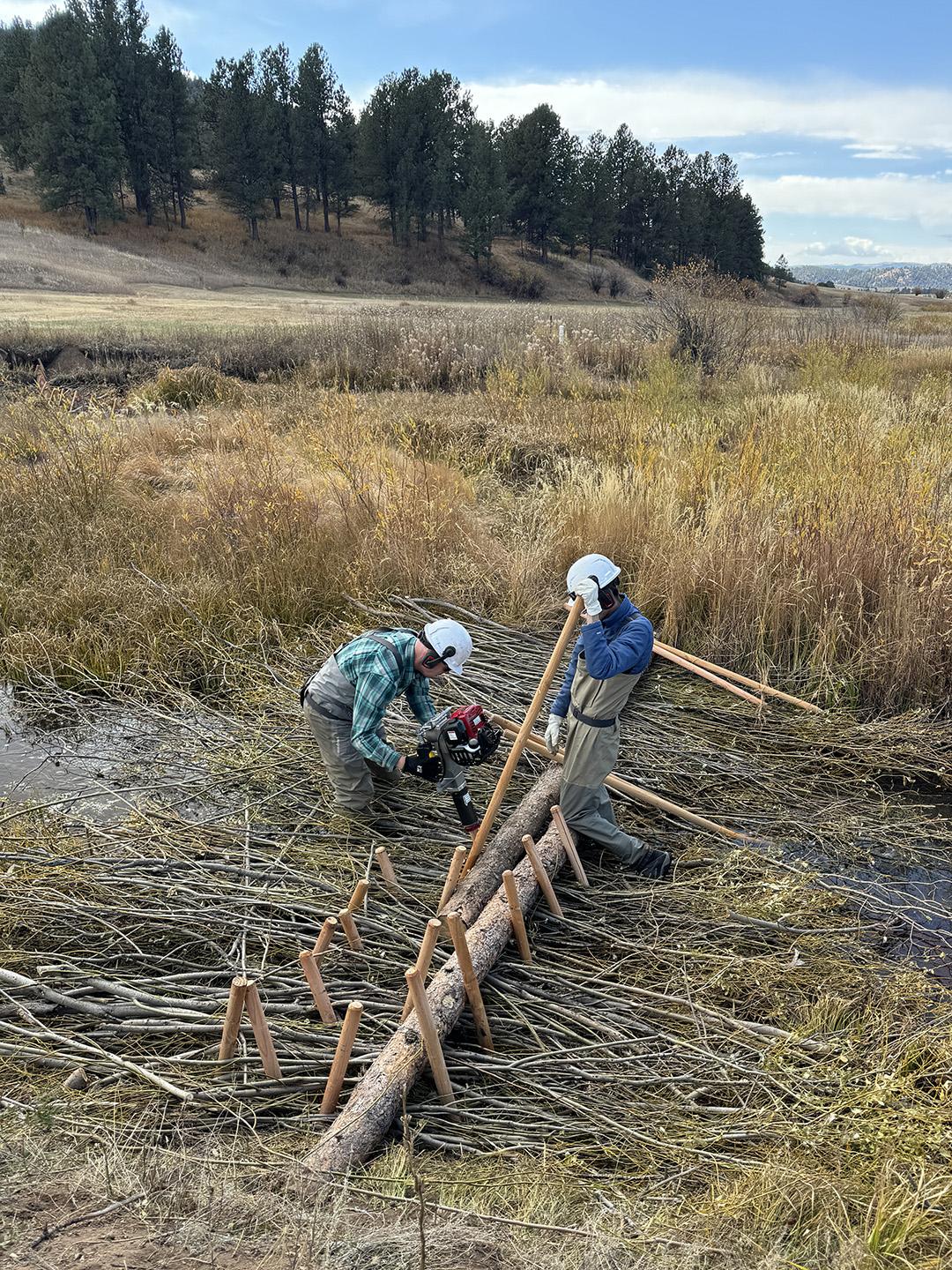
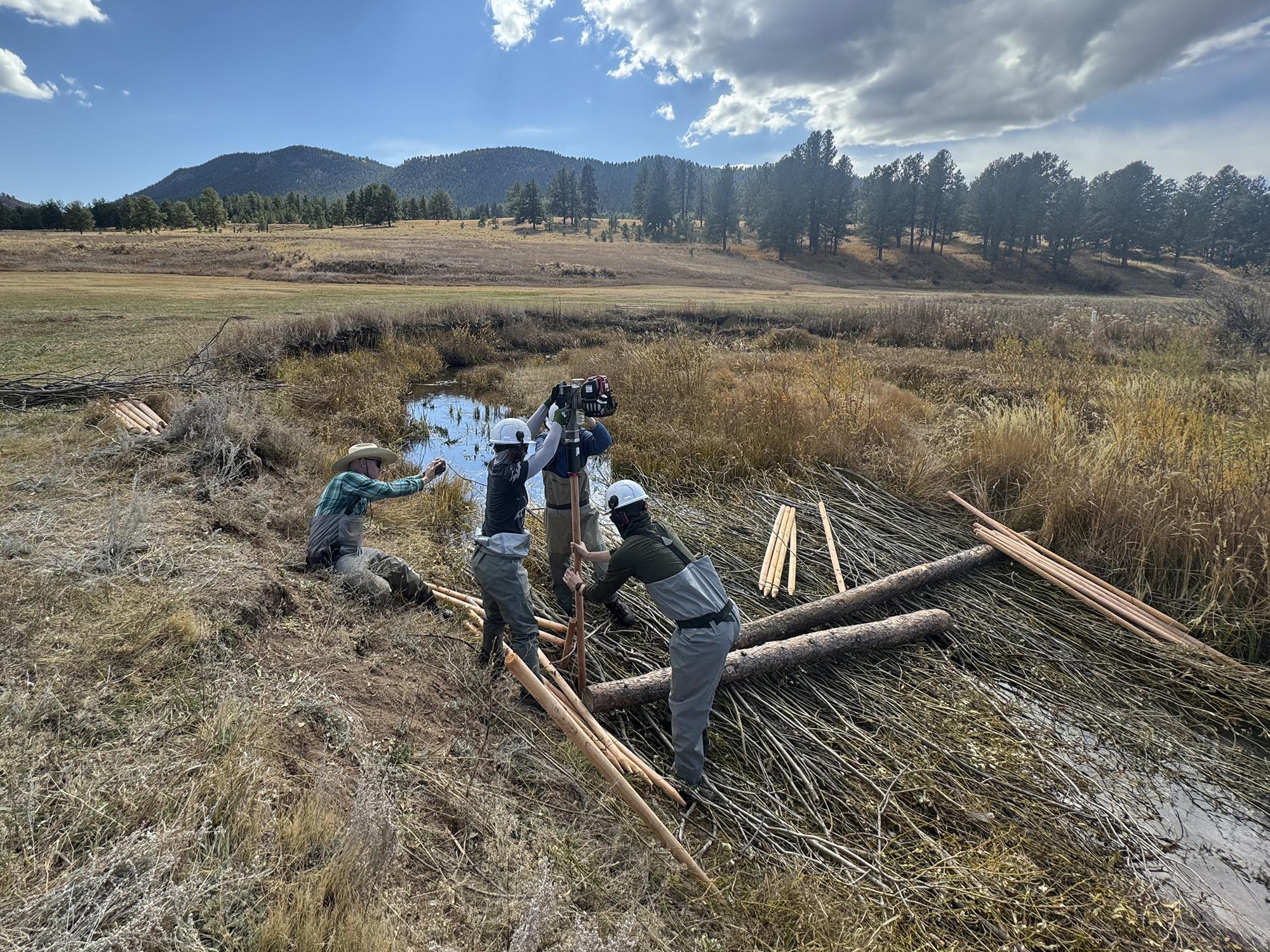
Despite the simple design, by slowing down water within the creek channel, PALS greatly benefit the riverscape—the waterway and surrounding area. These benefits include:
Led by Luke Javernick, Executive Director of River Science, the team included members of Natural Resources Conservation Services, Bird Conservancy of the Rockies, Pikes Peak Chapter of Trout Unlimited, Arkansas River Water Collaborative, Palmer Land Conservancy, and the landowners. River Science began work on the Fourmile Creek project in 2023. To track the success of the PALS installations, they take monthly flow data, groundwater data from eleven shallow wells on the property, and aerial imagery. Beginning in the spring of 2024, Luke has organized several workdays to construct PALS along the creek.
This pioneering project on Palmer-protected land demonstrates the power of partnerships in implementing innovative yet low-tech solutions for water conservation. The Stone Ranch Project is led by River Science and funded by Colorado Parks and Wildlife’s Wetlands for Wildlife program and Natural Resources Conservation Services’ (NRCS) Rare or Declining Natural Communities. This project exemplifies the potential of low-tech approaches in addressing water scarcity and enhancing ecological resilience. The valuable data collected from this project will guide the development of effective strategies for stream restoration and conservation efforts in the future.

Check out these resources to learn more about low-tech stream restoration: